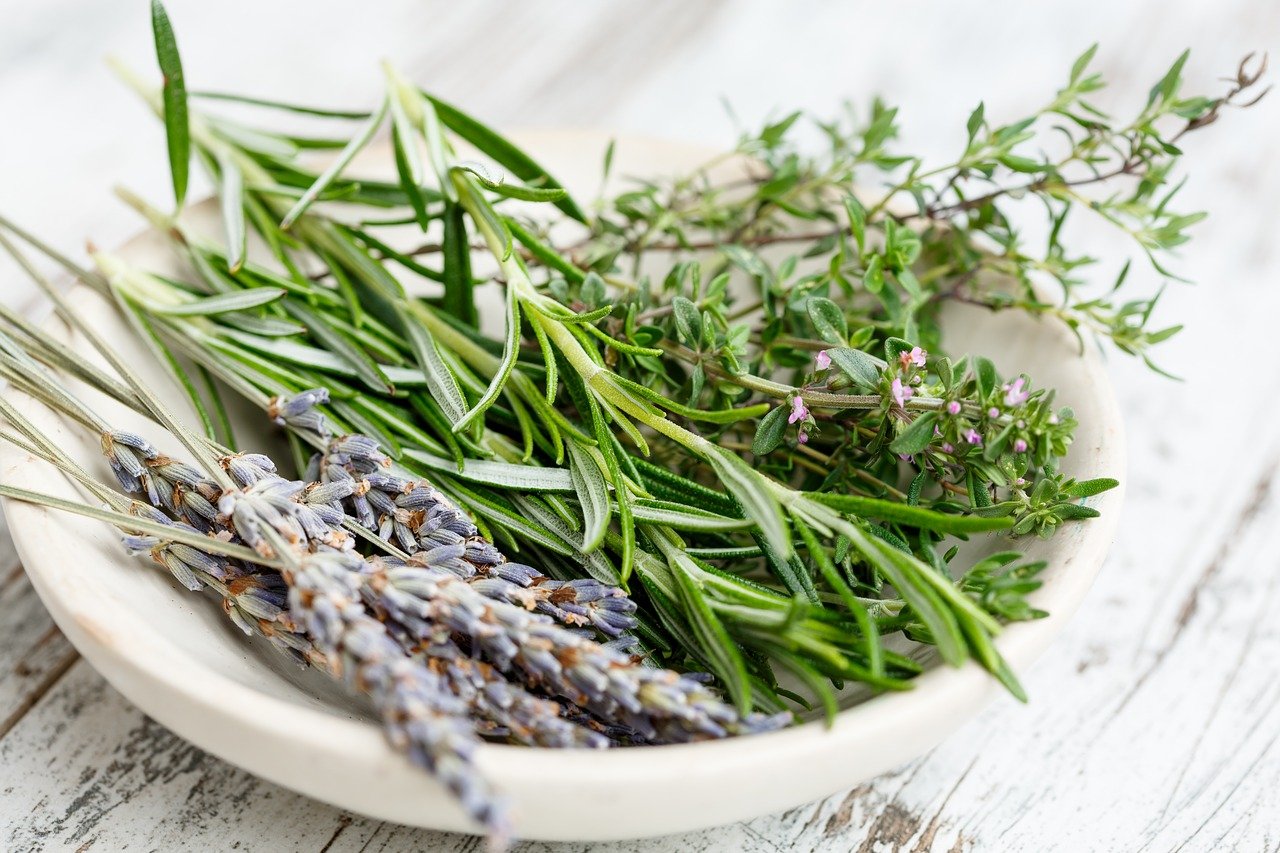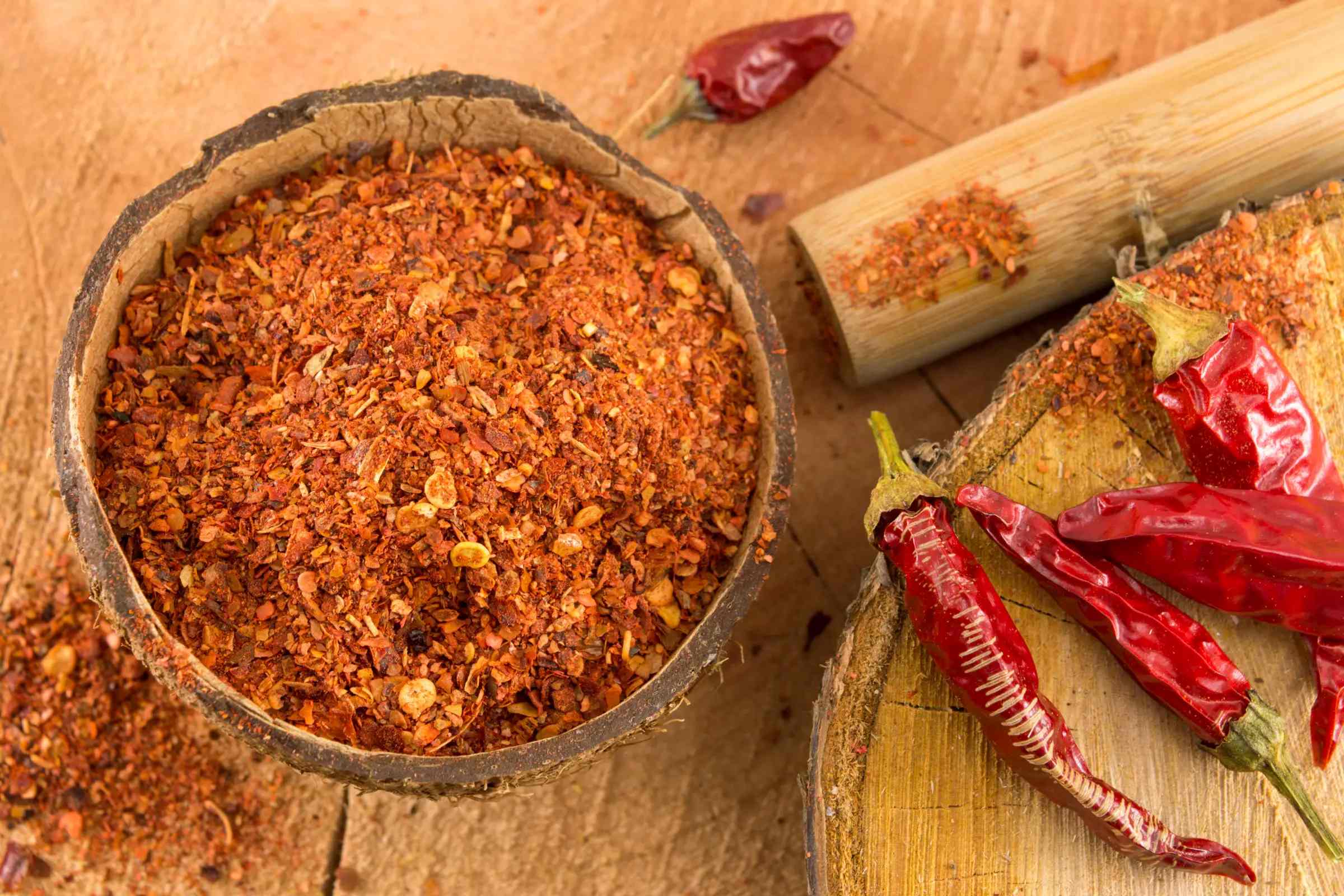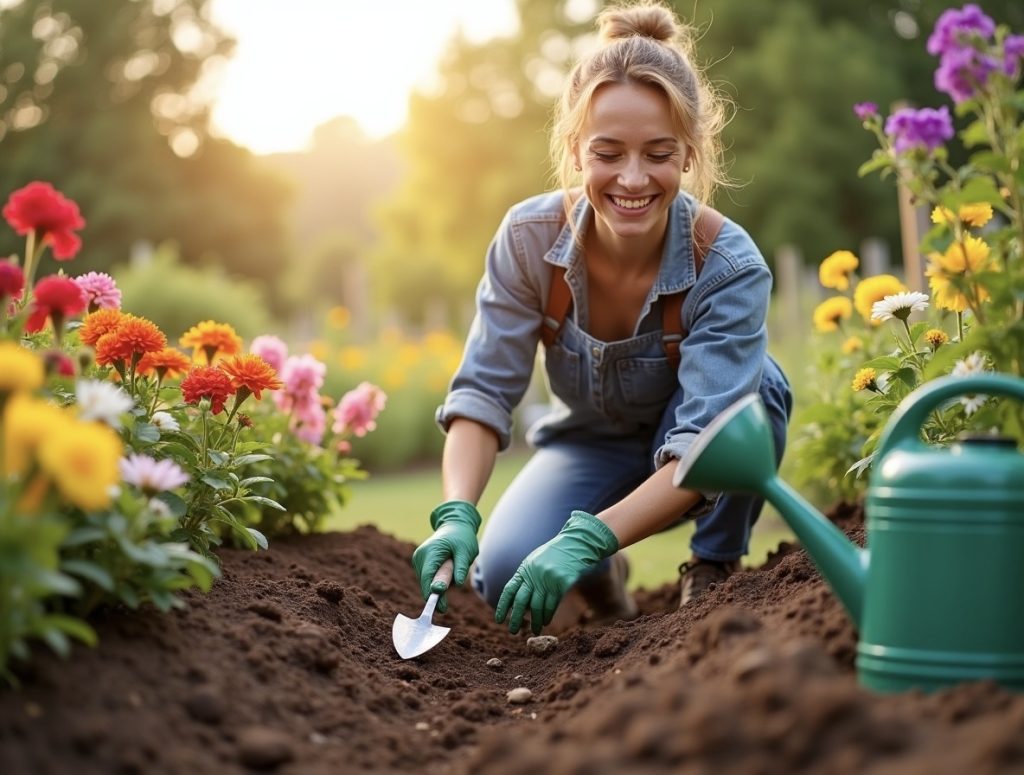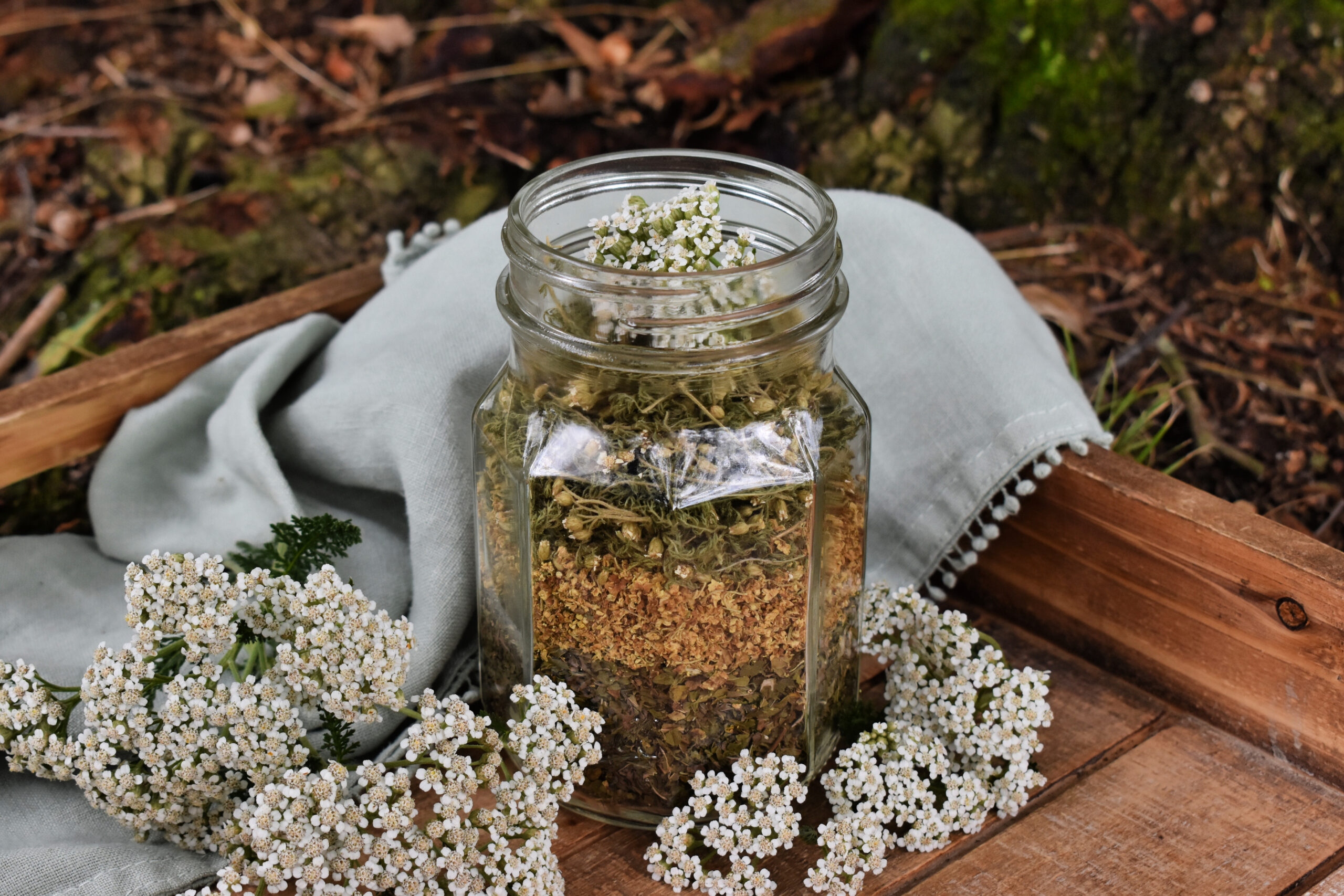Home>Gardening News and Trends>Latest News>How Long Are Dried Herbs Good For
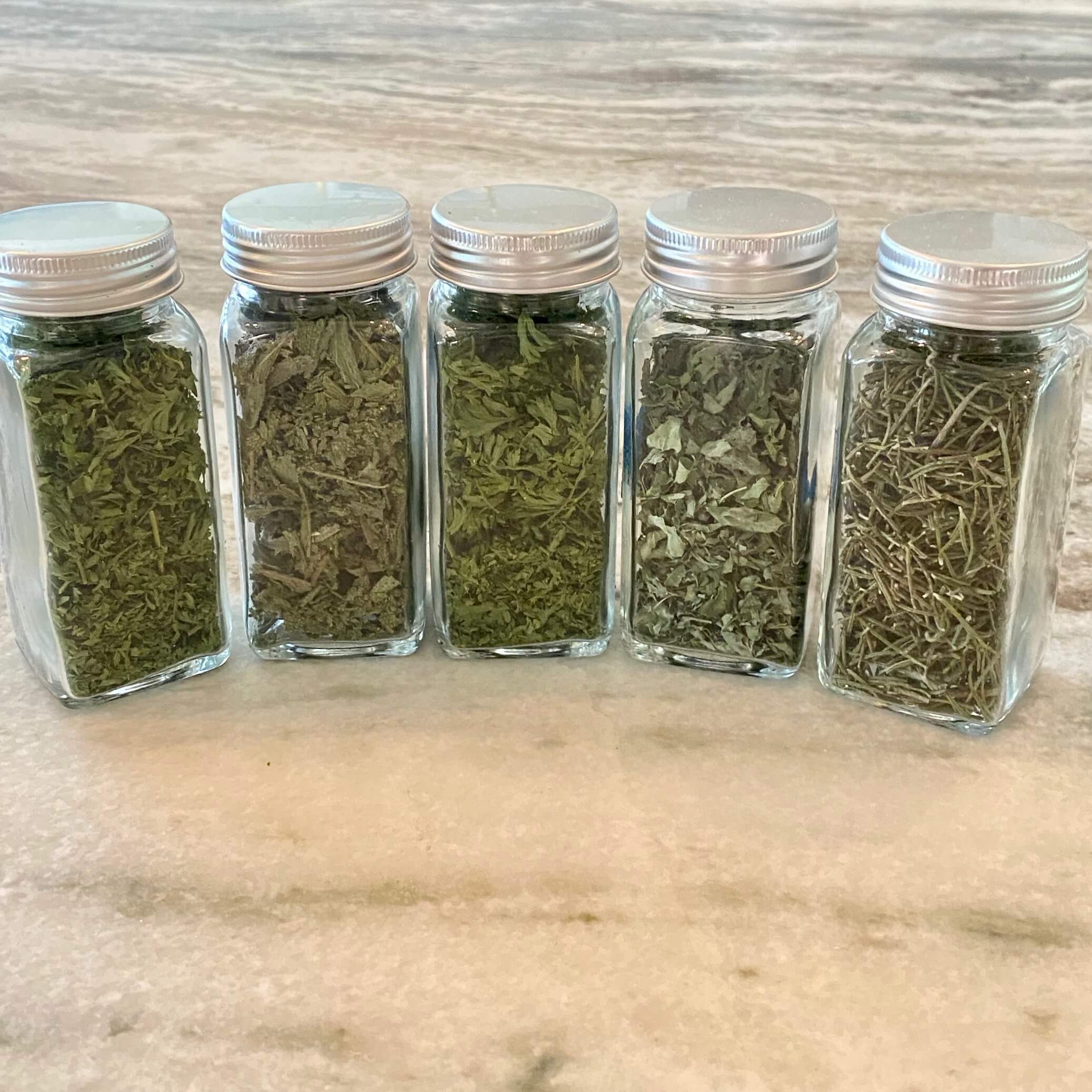

Latest News
How Long Are Dried Herbs Good For
Modified: January 22, 2024
Stay updated with the latest news on how long dried herbs are good for. Discover the shelf life and storage tips for your favorite culinary herbs.
(Many of the links in this article redirect to a specific reviewed product. Your purchase of these products through affiliate links helps to generate commission for Chicagolandgardening.com, at no extra cost. Learn more)
Table of Contents
Introduction
Welcome to our comprehensive guide on the shelf life of dried herbs. Whether you are an avid home cook or simply enjoy adding flavor and aroma to your favorite dishes, dried herbs are a pantry staple that can elevate your culinary creations. However, understanding the shelf life of dried herbs is essential to ensure their freshness and potency.
Unlike fresh herbs, which have a relatively short lifespan, dried herbs can be stored for extended periods without losing their flavor and medicinal properties. Nevertheless, various factors can impact their shelf life, including storage conditions, quality of the herbs, and the type of herb itself.
In this article, we will delve into the factors that affect the shelf life of dried herbs, provide guidance on determining if your dried herbs are still good, and offer tips on proper storage techniques to maintain their quality. Additionally, we will discuss common signs of spoiled dried herbs and how to extend their shelf life.
By understanding the shelf life of dried herbs and implementing the proper storage methods, you can ensure that your favorite dried herbs remain fresh, aromatic, and effective with each use. So let’s dive in and explore the fascinating world of dried herbs and how to make the most of their longevity.
Factors Affecting the Shelf Life of Dried Herbs
Several factors can influence the shelf life of dried herbs. Understanding these factors can help you determine how long your herbs will remain fresh and potent. Here are some key factors to consider:
1. Quality of the Herbs: The quality of the dried herbs plays a significant role in their shelf life. High-quality herbs that are properly harvested and dried will last longer compared to those of lower quality.
2. Storage Conditions: The way you store your dried herbs can greatly impact their shelf life. Herbs should be kept in airtight containers, away from light, heat, and moisture. Exposure to these elements can cause them to lose their flavor and aroma more quickly.
3. Type of Herb: Different herbs have varying shelf lives. Some herbs, such as rosemary and thyme, have a longer shelf life compared to more delicate herbs like parsley and cilantro. Understanding the specific shelf life of each herb can help you determine when it’s time to replace them.
4. Proper Handling: The way you handle dried herbs can also affect their shelf life. Always use clean, dry utensils when scooping out herbs from the container to prevent moisture and contaminants from getting in.
5. Expiration Date: Pay attention to the expiration date or best-by date on the packaging when purchasing dried herbs. While this date is not always an exact indication of when the herbs will spoil, it can give you a general idea of their freshness.
By considering these factors, you can ensure that your dried herbs remain fresh and flavorful for as long as possible. Proper storage and handling techniques are key to maintaining the quality and preserving the potency of your dried herbs. In the next section, we will discuss how to determine if your dried herbs are still good, even after their suggested shelf life has passed.
Determining if Dried Herbs Are Still Good
Knowing how to determine if your dried herbs are still good is essential to ensure their efficacy and safety in your culinary endeavors. While dried herbs generally have a longer shelf life compared to fresh herbs, they won’t last indefinitely. Here are a few signs to look for when determining the quality of your dried herbs:
1. Color and Aroma: Take a close look at the color of your dried herbs. Vibrant, green or deep, rich colors are generally a good sign of freshness. Faded or dull colors can indicate that the herbs have lost their potency. Additionally, herbs should still have a strong aroma when you open the container. If the herbs have little to no scent, they may have gone stale.
2. Taste: The flavor profiles of dried herbs are a good indicator of their freshness. Give each herb a taste test by sprinkling a small amount onto your palm and gently crushing it with your fingertips. If the flavor is weak or nonexistent, it’s time to replace them.
3. Texture: The texture of dried herbs can change over time. While some herbs may naturally become more crumbly, others may turn limp or develop clumps. If you notice any changes in texture, it’s likely that the herbs have lost their freshness.
4. Mold or Moisture: Moisture and mold are clear signs that your dried herbs have gone bad. If you notice any signs of mold growth or if the herbs feel damp, it is important to discard them immediately. Consuming moldy herbs can lead to food poisoning and adverse health effects.
It’s important to note that while dried herbs may still be safe to consume after their suggested shelf life has passed, their flavor and potency may have significantly diminished. As a general rule of thumb, it’s best to replace dried herbs every 6-12 months to ensure the best quality in your cooking.
Now that you know how to determine if your dried herbs are still good, let’s move on to explore proper storage techniques that can help extend their shelf life and maintain their freshness.
Proper Storage Techniques for Dried Herbs
Proper storage of dried herbs is crucial in maintaining their flavor, aroma, and potency. By following these storage techniques, you can extend the shelf life of your dried herbs and ensure their freshness for an extended period:
1. Airtight Containers: Store your dried herbs in airtight containers to protect them from exposure to air, which can lead to oxidation and loss of flavor. Glass jars with tight-fitting lids or resealable plastic bags work well for this purpose.
2. Cool and Dark Location: Keep your dried herbs away from light, heat, and moisture, as these elements can degrade their quality. Choose a cool, dark spot in your pantry or kitchen cabinet to store them.
3. Label and Date: Properly label your containers with the name of the herb and the date of purchase or packaging. This will help you keep track of the freshness of each herb and ensure you use the oldest ones first.
4. Avoid Grinding Until Needed: Whole dried herbs tend to retain their flavor and potency better than pre-ground herbs. Consider grinding or crushing them just before use to maintain their essential oils and aromatic properties.
5. Freezer Storage: If you need to store large quantities of dried herbs or want to extend their shelf life even further, you can freeze them. Place the herbs in airtight freezer bags or containers and store them in the freezer for up to a year. However, keep in mind that freezing can alter the texture of the herbs, so they may be best suited for use in cooked dishes rather than garnishes.
By following these proper storage techniques, you can ensure that your dried herbs remain fresh, flavorful, and potent for an extended period. However, it’s important to note that even with proper storage, dried herbs will gradually lose their potency over time. In the next section, we will provide some tips on how to extend the shelf life of your dried herbs.
Stay tuned for our tips on maximizing the longevity of your favorite dried herbs.
Tips for Extending the Shelf Life of Dried Herbs
While dried herbs already have a longer shelf life compared to fresh herbs, there are several tips and techniques you can employ to further extend their freshness and potency. Here are some helpful tips for maximizing the longevity of your dried herbs:
1. Buy in Small Batches: To ensure you’re using the freshest herbs possible, consider purchasing dried herbs in smaller quantities. This allows you to use them up within a shorter time frame and replace them with new, fresh herbs.
2. Properly Seal Containers: When storing dried herbs, ensure that the containers are tightly sealed to prevent air and moisture from seeping in. This helps preserve their fragrance and flavor for a longer period.
3. Keep Away from Heat: Heat can speed up the degradation process of dried herbs. Avoid placing your herb containers near stovetops, ovens, or other heat sources to maintain their freshness.
4. Avoid Crushing Until Needed: Crushing or grinding dried herbs releases their essential oils, which can diminish over time. To preserve their flavor and potency, wait to crush or grind the herbs until just before using them.
5. Use Dry Utensils: When scooping dried herbs from their containers, ensure that the utensils are completely dry. Moisture can lead to clumping and mold growth, causing the herbs to spoil more quickly.
6. Store in a Cool, Dark Place: Optimal storage conditions for dried herbs involve keeping them in a cool and dark location. Exposing them to light and heat can cause the herbs to lose their color, flavor, and medicinal benefits.
7. Regularly Check for Freshness: Periodically inspect your dried herbs for any signs of spoilage, such as discoloration, loss of aroma, or the presence of mold. If you notice any of these signs, it’s time to discard the herbs and replace them.
8. Consider Vacuum Sealing: Vacuum-sealing your dried herbs can remove air and moisture, further extending their shelf life. This method is especially useful if you have a large quantity of herbs or want to store them for an extended period.
By implementing these tips, you can significantly prolong the shelf life of your dried herbs and ensure their fresh flavors and aromas enhance your culinary creations for an extended period of time. In the next section, we will discuss the common signs of spoiled dried herbs to help you identify when it’s time to replace them.
Common Signs of Spoiled Dried Herbs
While dried herbs have a longer shelf life compared to fresh herbs, they can still spoil over time. It’s important to be aware of the common signs of spoiled dried herbs to ensure your safety and the quality of your dishes. Here are some indicators that your dried herbs may have gone bad:
1. Discoloration: If you notice any unusual discoloration in your dried herbs, such as dark spots or changes in color, it can be a sign of spoilage. Fresh and vibrant colors are a good indication of the quality and potency of dried herbs.
2. Loss of Aroma: Dried herbs should have a strong, distinct aroma when you open the container. If you find that the herbs have little to no scent or a musty smell, it’s a clear sign that they have lost their freshness and flavor.
3. Mold or Mildew: The presence of any mold or mildew on your dried herbs is a definite sign of spoilage. Mold growth is not only unpleasant but can also pose health risks, so it’s crucial to discard any herbs that show signs of contamination.
4. Insects or Pests: If you notice any insects or pests in your dried herbs or their packaging, it’s an indication of improper storage or poor quality. These unwanted visitors can render the herbs unsuitable for consumption.
5. Change in Texture: Dried herbs should retain their texture and crumble easily when touched. If you find that the herbs have become clumpy, limp, or have a moist texture, it’s likely that moisture has compromised their freshness.
6. Tasteless or Bitter Flavor: Dried herbs that have lost their potency may have a weak or bitter taste. If you find that your herbs no longer impart the desired flavor to your dishes, it’s time to replace them.
It’s essential to note that consuming spoiled dried herbs can lead to an unpleasant taste and potentially cause foodborne illnesses. To ensure the safety and quality of your culinary creations, always inspect your dried herbs for any signs of spoilage before using them.
Now that you’re aware of the common signs of spoiled dried herbs, you can confidently evaluate the quality of your herbs and make informed decisions about using or replacing them. In the final section, we will summarize the key points discussed and offer some closing thoughts on the shelf life of dried herbs.
Conclusion
Dried herbs are a versatile and convenient ingredient that can add depth and flavor to your culinary creations. Understanding the factors that affect their shelf life and implementing proper storage techniques are key to maintaining their freshness, potency, and safety for an extended period. By following the tips and guidelines provided in this article, you can ensure that your dried herbs remain at their best for as long as possible.
Remember to consider the quality of the herbs, storage conditions, and the specific characteristics of each herb when determining their shelf life. Regularly check for signs of spoilage such as discoloration, loss of aroma, presence of mold, and changes in texture. When in doubt, it is better to replace dried herbs to maintain the desired flavors and health benefits in your dishes.
Properly storing dried herbs in airtight containers, keeping them in a cool and dark place, and using dry utensils are effective ways to extend their shelf life. You may also consider vacuum sealing or freezing herbs for long-term storage if desired. Pay attention to the expiration date or best-by date on the packaging for a general indication of freshness.
As a home cook or culinary enthusiast, ensuring the quality and freshness of your dried herbs is essential for creating delicious and aromatic dishes. By practicing proper storage techniques and being aware of the signs of spoilage, you can make the most out of your dried herbs and elevate your culinary endeavors.
So, embrace the wonderful world of dried herbs, experiment with different flavors, and enjoy the convenience they bring to your cooking. With the knowledge gained from this guide, you can confidently incorporate dried herbs into your favorite recipes and savor the enhanced flavors they provide. Happy cooking!




